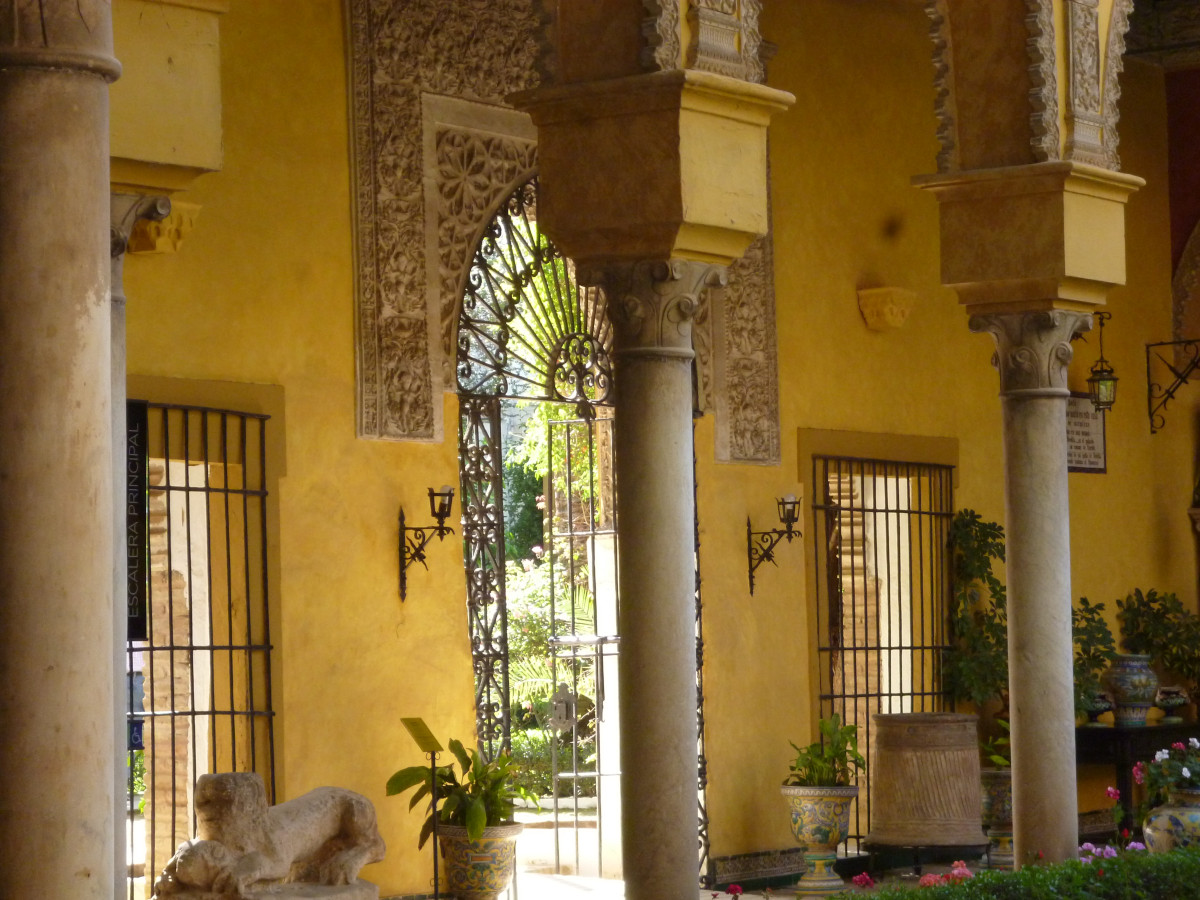Last Updated on January 3, 2024 by Marian Jones
4 places to wind down in Seville
This post is a wander through the main park and some of the palaces of Seville, indeed the city’s loveliest spots. You can enjoy shade and relaxation in the beautiful olde worlde Parque de Maria Luisa with its art deco tiled benches and stunning Plaza de Espana. There are so many ‘palacios’ in Seville, and we pick out three of the most unmissable and give an outline of what you will find at each of them.
the maria luisa park


Its full name is quite the mouthful: Parque Urbano Infanta Maria Luisa Fernanda. But it’s good to remember Maria Luisa, who began this garden in 1848 and made sure it was donated to the city after her death. It is an absolute delight: stately avenues, horse-drawn carriages, tiled benches, pools and fountains. The writer Laurie Lee, visiting in the 1950s, captured the atmosphere beautifully: ‘Children in large hats and long white pinafores bowled their grave hoops among the rose trees. Black-stockinged girls bent over pools, poking at goldfish with stems of lilies. And opulent mamas, ripe in black satin, drowsed at their ease on the blue-tiled benches. It was a landscape by Renoir, an end-of-century dream …’
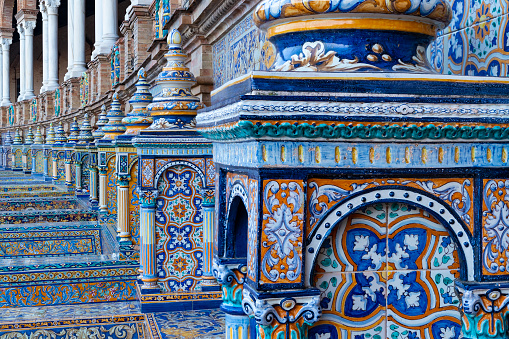
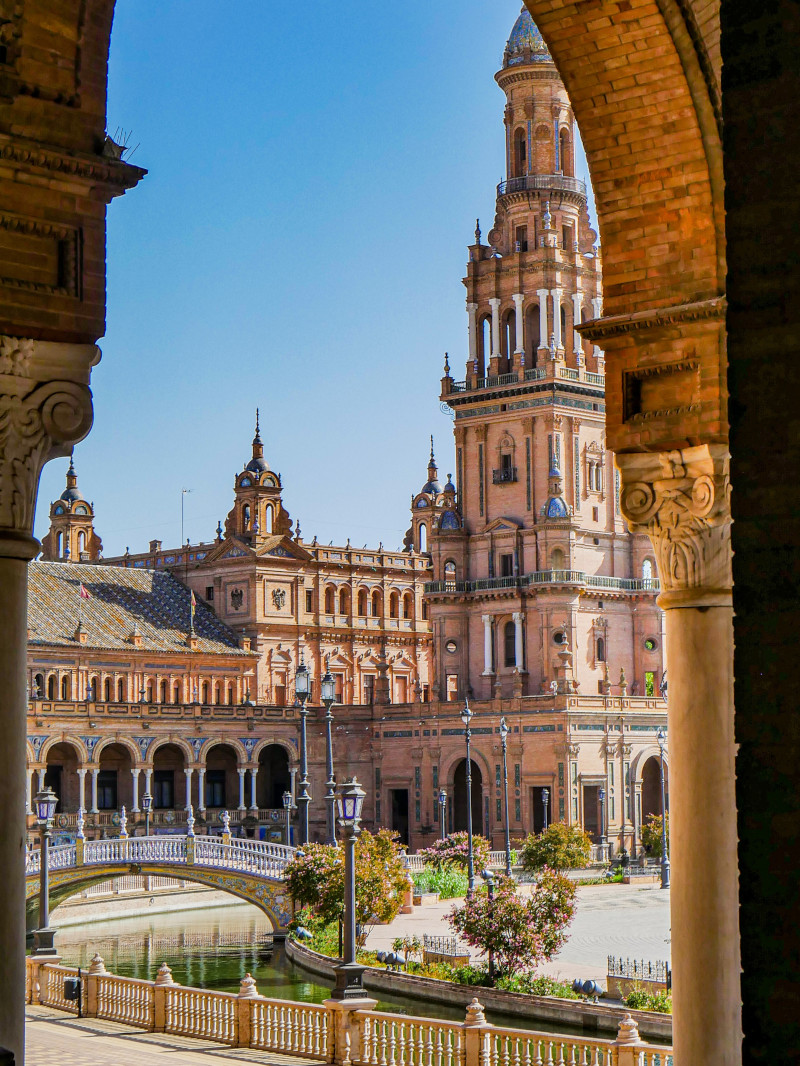
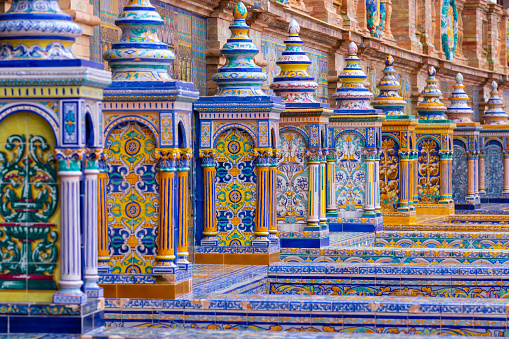
Dotted around the park are about 20 pavilions, built for the Spanish-American exhibition in 1929 (There’s more on the podcast on these). The Plaza de Espana is a stand-out beauty, a semi-circular building curving around a lagoon, with 50 alcoves representing the Spanish provinces in tiled maps and pictures. The four bridges over the lagoon represent the old Spanish kingdoms – Aragon, Leon, Castille and Navara – and the old-fashioned iron lampposts, fountains and ceramic balustrade are lovely. ‘‘I knew that this would be beautiful’, said King Alfonso when he opened it in 1928, ‘but not so very beautiful’. Linger here to gaze, hire a boat, enjoy an ice cream.
Other highlights include the Plaza de America, where the Pabillon Real (Royal Pavilion), with its ceramic façade of blue and white, its ponds, fountains and statues, was built in honour of Maria Luisa. Nearby is the Museo de Artes y Costumbres Populares where you can learn all about Andalusian culture and see a huge collection of ceramics from the 14th to 19th centuries. At the Museo Archeologico there are thousands of exhibits from the nearby Roman town of Italica. Finally, don’t miss the theatre, the Teatro Lope de Vega – even if your Spanish isn’t up to attending a performance, you can visit the café and enjoy a break under its huge art deco central dome.
the Casa de Pilatos
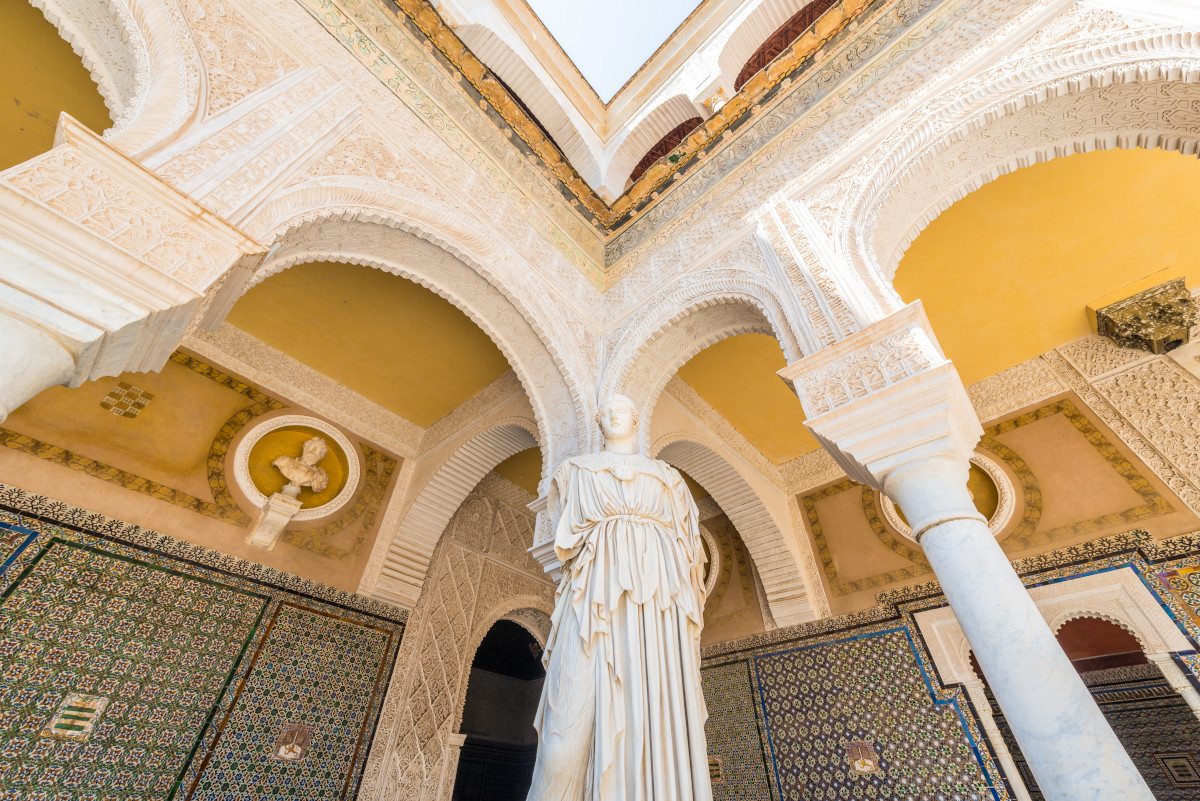
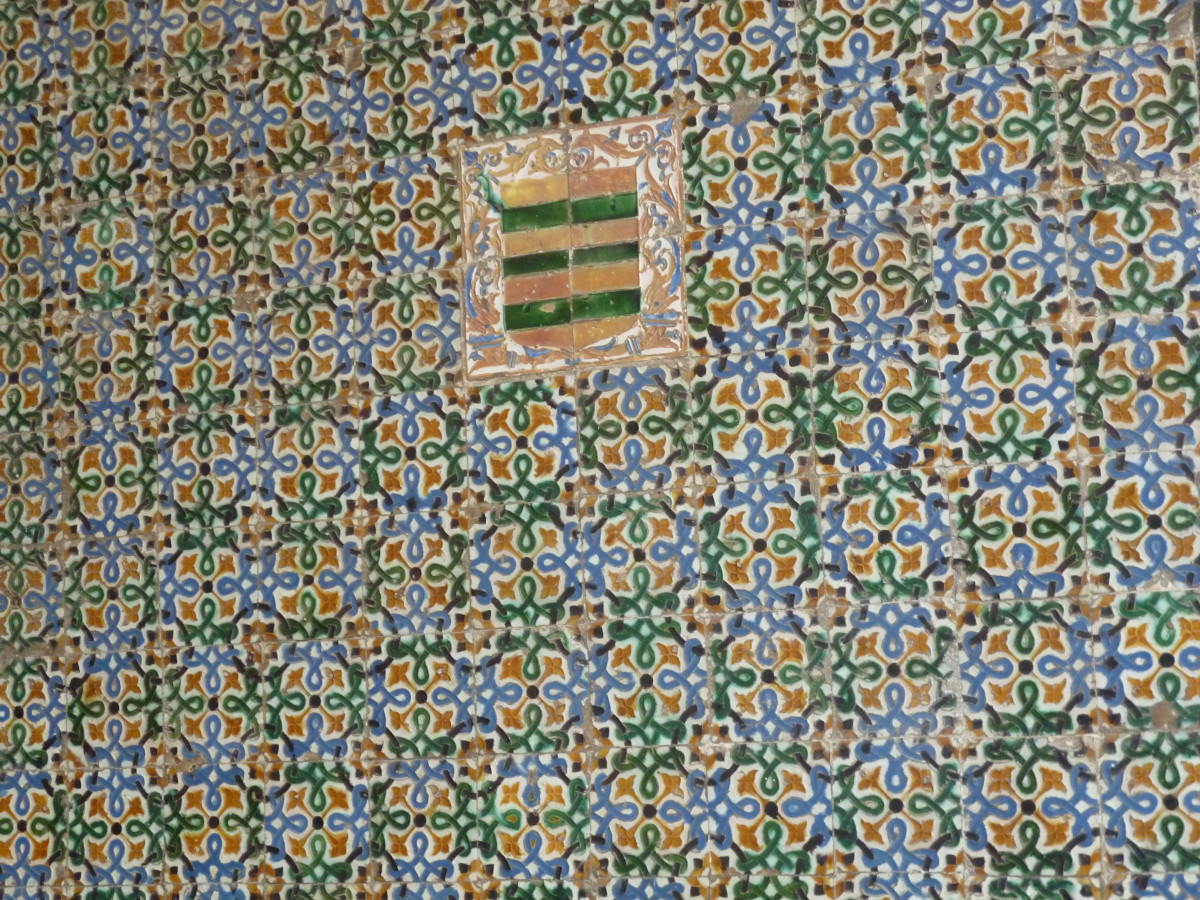
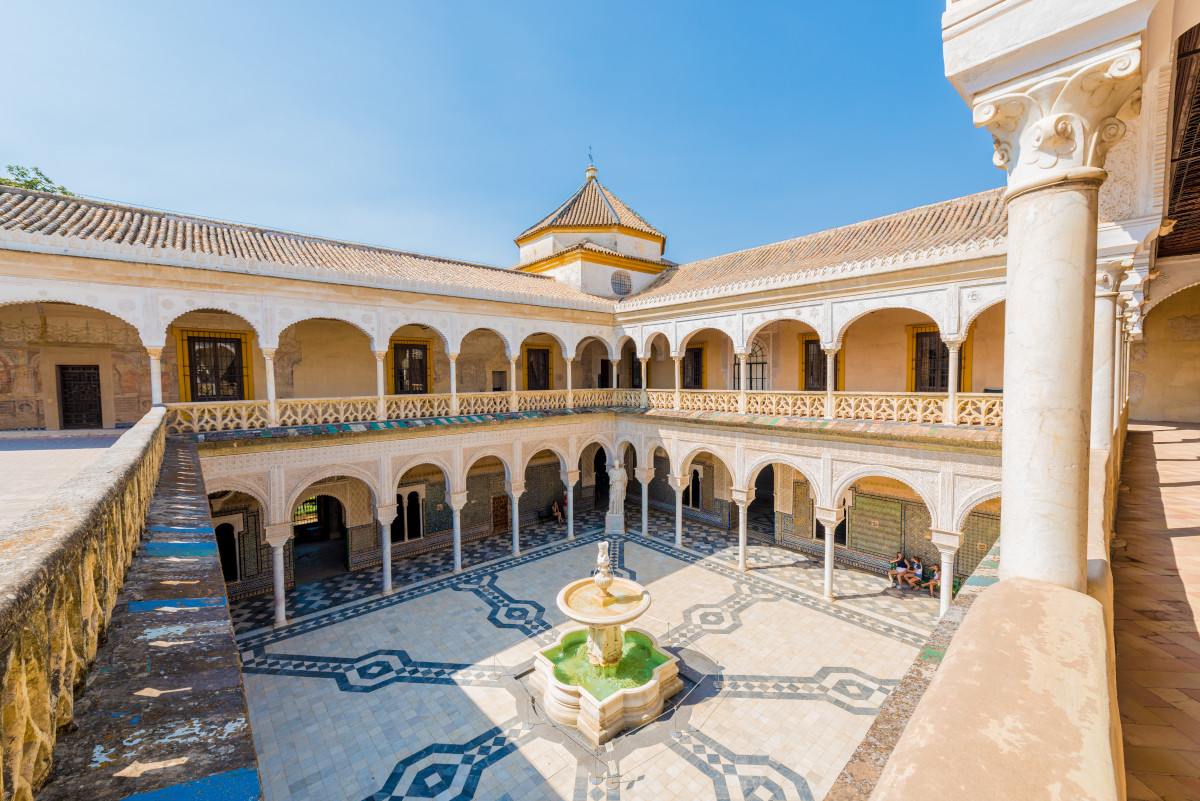
The Casa de Pilatos, begun in 1483, has a stunning mix of architectural styles. Islamic influences include the main patio, with its central fountain, lacy plasterwork surrounds, archways and tiling. The balustrade around the upper floor is gothic and dotted around are classical statues – Minerva, Athena – linked to the renaissance. Downstairs is a series of antechambers, upstairs there are furnished rooms, including living and dining rooms, a salita de fumor (smoking room) and a library. Stories told on the podcast include how the house got its name when its original owner, Don Fabrique, made a pilgrimage to Jerusalem and the murderous episode which brought the sculpture of Pedro the Cruel’s head here, an ‘ornament’ you can still see today.
the Palacio de las Duenas


The courtyard of the beautiful Palacio de las Duenas has ochre walls, archways and decorations of flowers, plants and tiles. Its last owner, the Duchess of Alba, died in 2014 and the palace still has the feel of a family home. Her room, for example, is jammed with photos and ornaments and – wonderfully – the platform where she liked to dance flamenco, complete with a model wearing one of her stunning turquoise silk shawls. The poet Antonio Machado (1875-1939), known for his romantic poems on the history and landscape of Spain, grew up here. A strong Republican supporter, he fled Spain in 1939 when the civil war ended in the collapse of the Republic and he died soon afterwards in exile.
There is a plaque in his memory on a wall in the garden and extracts from his work on the podcast. Of the Republican defeat, he said ‘For the historians it is clear, we lost the war. But at a human level I am not so sure, perhaps we won.’ And remembering his childhood, growing up here in the Palacio de las Duenas, he wrote: ‘My infancy is the memories of a patio in Seville / And a bright garden where the lemon trees grew.’
the Palacio de Lebrija

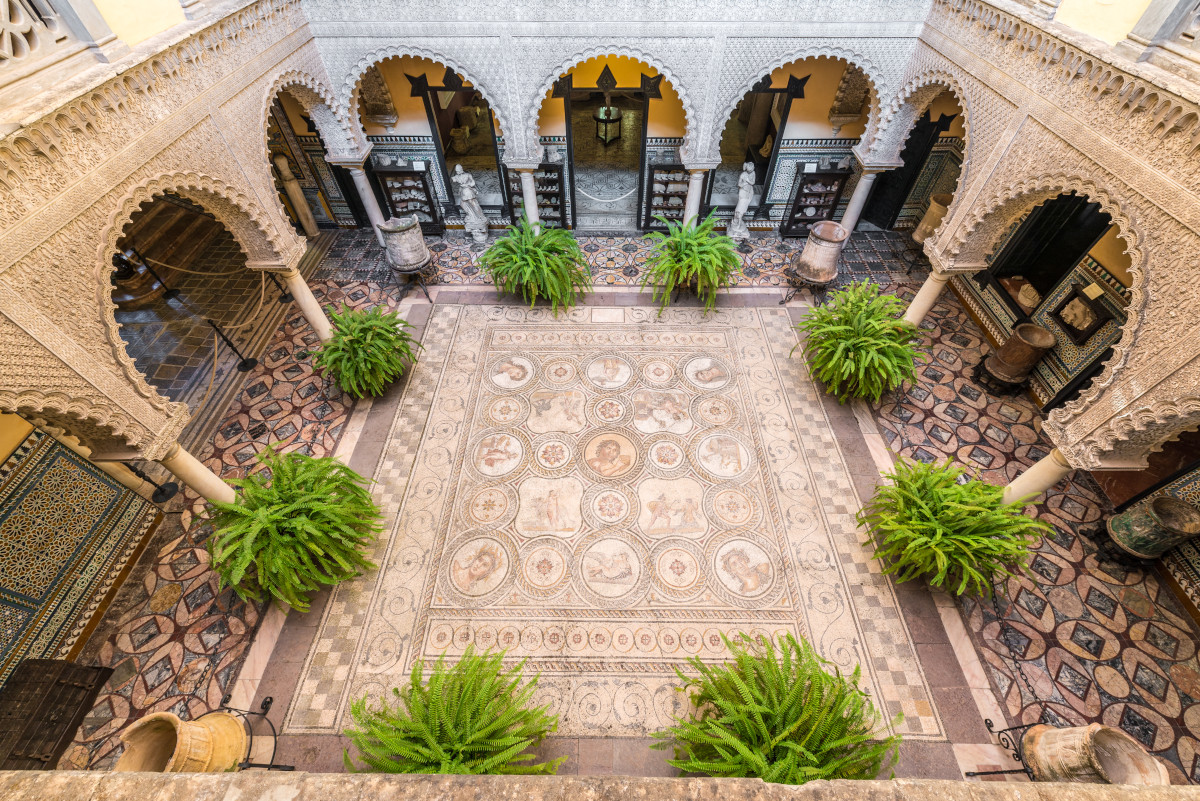
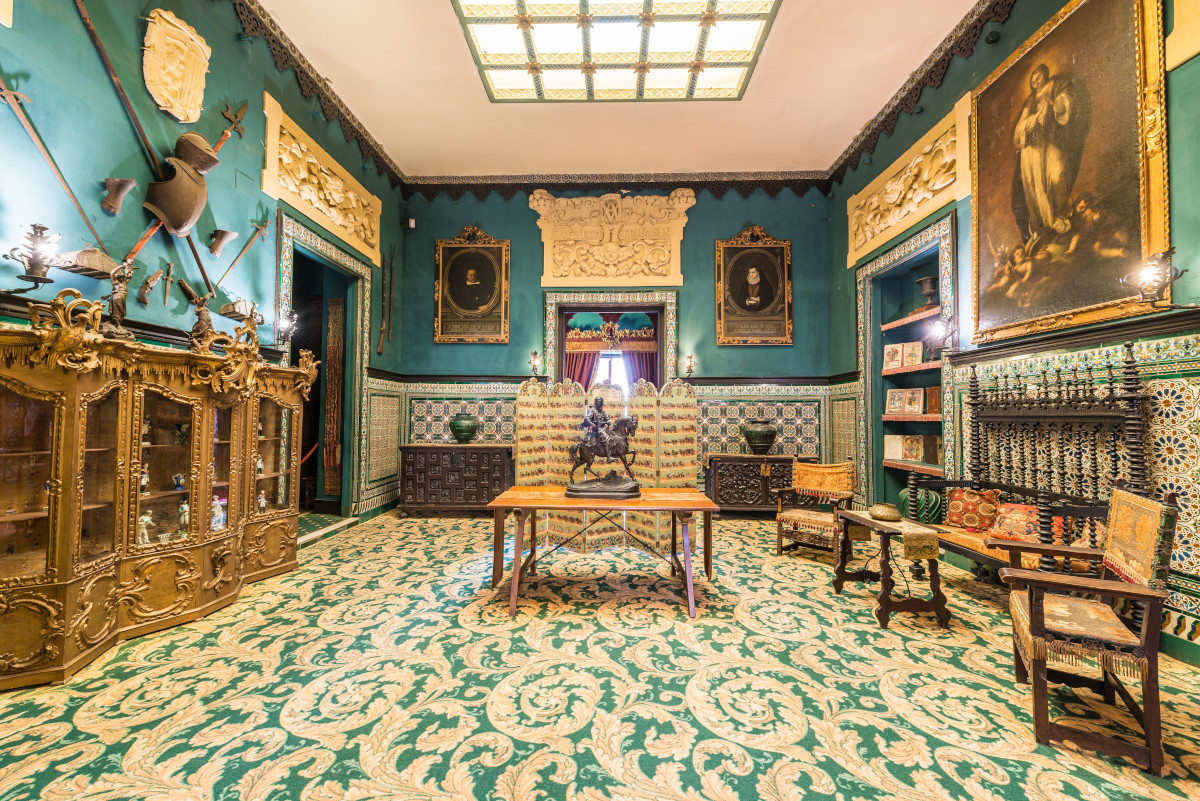
The Palacio de Lebrija, a haven of tranquillity just off one of Seville’s busiest streets, dates from the 15th century and belonged to the Countess of Lebrija from 1901. She was an archaeologist and filled her home with many of the treasures she had found. Roman remains from nearby Italica include extensive mosaic flooring on the main patio, dating from the 2nd or 3rd century BC. There’s lots more – Roman glassware and coins, a large collection of ceramic tiles, 4000 books on antiquity and archaeology – but perhaps the main attraction is the atmosphere. Rounding every corner seems to bring a new, lovely vista: arches recede one into another, and plants and tiled decorations are artfully placed against the whitewashed walls.
All the palaces of Seville are worth a visit, and any of the three above, especially so!
Listen to the POdcast
Reading suggestions
A Rose for Winter by Laurie Lee
A Voice in Time A Selection of Poems by Antonio Machado (kindle edition)
Border of a Dream Selected Poems of Antonio Machado (in Spanish)
links for this post
Museo de Artes y Costumbres Populares
Museo Archeologico
Casa de Pilatos
Palacio de las Duenas
Palacio de Lebrija
Previous Episode Semana Santa and the Feria de Abril
Next Episode Triana

